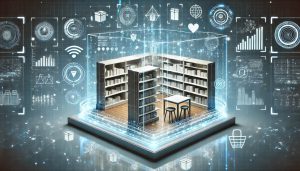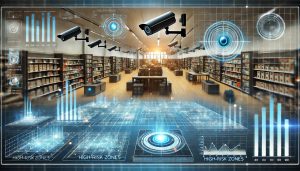Introduction
In the ever-changing tapestry of our lives, technology ceaselessly weaves new patterns that transform our understanding of the world. The arrival of artificial intelligence (AI) has revolutionised our methods of problem-solving and decision-making, casting light upon the curious irony of AI, particularly ChatGPT, and its reliance on historical data to envision the future. In this blog, we shall meander through this captivating irony and ponder whether our trust in the past can truly guide us towards an unpredictable future.
The Roots of AI in History
Like a tree drawing sustenance from the soil, AI, including ChatGPT, feeds on the past to build its intelligence. By consuming a veritable feast of historical data, it forges connections and crafts seemingly intelligent responses. This mirrors our own human learning, as we grow from our experiences and those of others. Yet, one cannot help but wonder, does anchoring AI in history hinder its potential to conjure a future unimagined?
The Conundrum of Predictive AI
Predictive AI models rest upon the notion that history can illuminate future events. These models scrutinise past data patterns to make educated predictions about the future. Though useful in many cases, this approach unveils a paradox: AI is guiding us into unexplored realms where the lessons of history may no longer hold sway.
Tales of the Paradox
Numerous examples highlight the limitations of relying on historical data to predict the future, particularly when AI-driven advancements come into play:
- Financial Markets
The global financial crisis of 2008 exposed the frailty of historical data in foreseeing disruptive events in complex models.
- Climate Change
As natural disasters intensify due to climate change, historical data becomes an increasingly unreliable compass for accurate predictions.
- The COVID-19 Pandemic
AI models that predicted the spread of infectious diseases based on past outbreaks were ill-equipped to fully anticipate the global ramifications of COVID-19.
- Technological Disruptions
Ground-breaking technologies can shake industries to their core, rendering historical data impotent for predicting future advancements.
- Political Events and Social Movements
Unpredictable political events and social movements, like the Arab Spring or the Brexit referendum, wield far-reaching impacts that defy historical predictions.
These tales underscore the necessity for adaptable and responsive AI systems that can embrace real-time data and evolve with the ever-shifting landscape.
The Enigmatic Future
As AI strides boldly onward, we find ourselves venturing into a new era that defies the definition of the past. The very essence of AI and its rapid development renders it a challenge, if not an impossibility, to foresee what the future may hold. While historical data remains a valuable tool for understanding our world and making informed decisions, it may not be enough to tackle the unique challenges and opportunities awaiting us.
Finding Balance: The Dance of Dynamic Learning Models
Recognising the limitations of conventional predictive models grounded in historical data, we must also contemplate the potential for AI to provide a solution. As the relevance of historical periods wanes, it is vital to explore alternative decision-making models that can keep pace with the swiftly changing world.
At BlueSky, we passionately believe that the answer lies within AI and the embrace of mathematical decision-making models capable of continuously consuming and processing unstructured data. This transition towards dynamic learning models would empower AI systems to persistently update their knowledge bases and adapt their predictions based on fresh information. These self-learning AI systems can autonomously refine their algorithms and decision-making processes in response to new data, allowing them to remain relevant and effective amidst a world in flux.
Adapting to the Rhythms of Time
The relevance of historical data can fluctuate depending on the use case, necessitating the development of AI systems that can adjust their decision-making processes to diverse time scales. For some applications, a two-year historical period may have once been sufficient, whereas now, a period as brief as a few days could be more fitting for the ever-changing environment.
The Dance of Self-Learning AI Systems
Incorporating self-learning concepts into AI systems is one way to achieve this fluidity. Self-learning AI can autonomously fine-tune its algorithms and decision-making processes based on newly acquired data, allowing it to remain relevant and effective even as the world pirouettes around it. This adaptability enables AI systems to be more responsive to novel situations and to make more precise predictions, even as the significance of historical data diminishes.
The tempo of data consumption, analysis, and our ability to pivot will become the new assets of tomorrow’s successful companies.
Conclusion
The irony of relying on the past to predict a future that defies historical precedent is a mesmerising aspect of AI and ChatGPT. As we journey into uncharted territory, it is essential to acknowledge the limitations of our current predictive models and explore new methods for navigating the uncertain future, such as dynamic learning models and self-learning AI systems. By finding the right balance between AI-driven models, human insight, and adaptability to real-time data, we can ensure that AI continues to evolve in a way that benefits humanity and propels us toward a brighter and more innovative tomorrow.
In our next blog, we shall delve into the realm of AI and prescriptive analysis, and the exponential benefits that may arise from this captivating AI extension.







No comment yet, add your voice below!